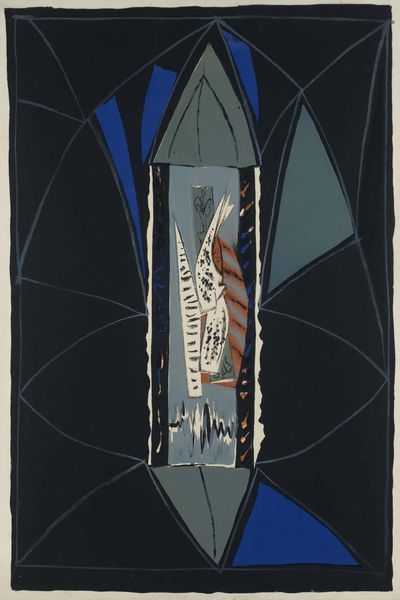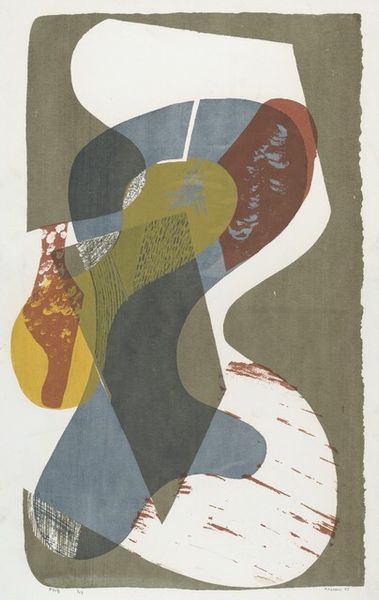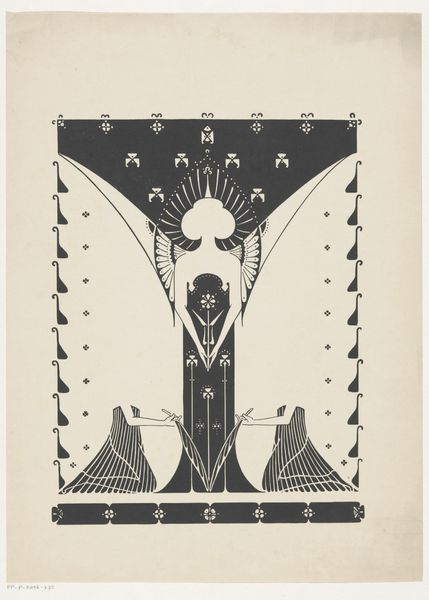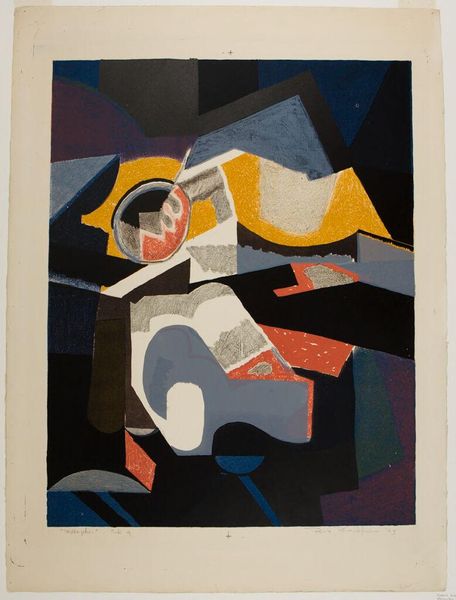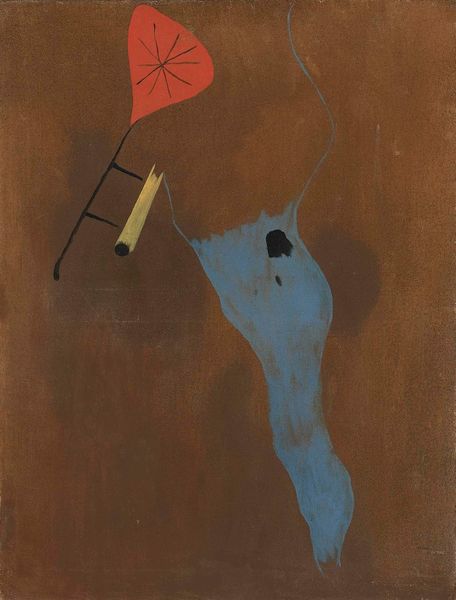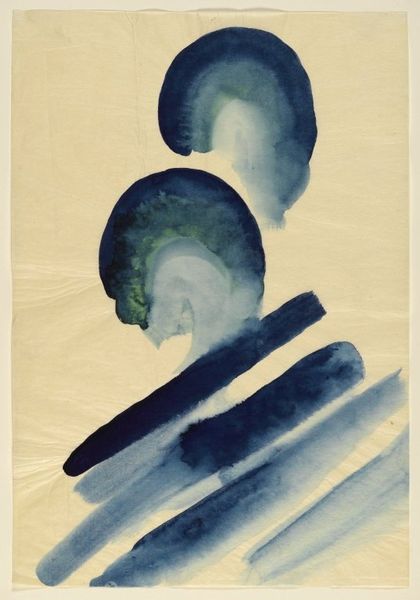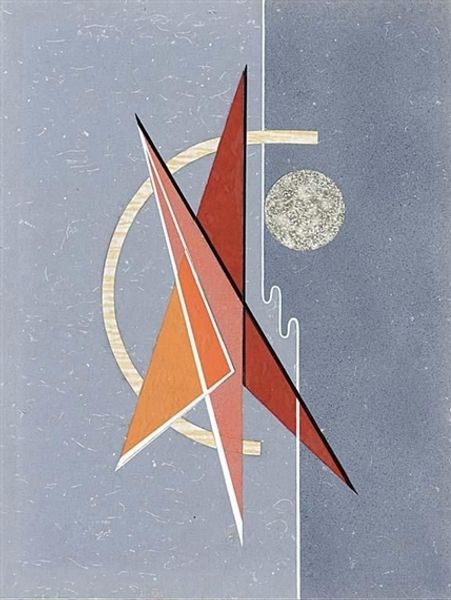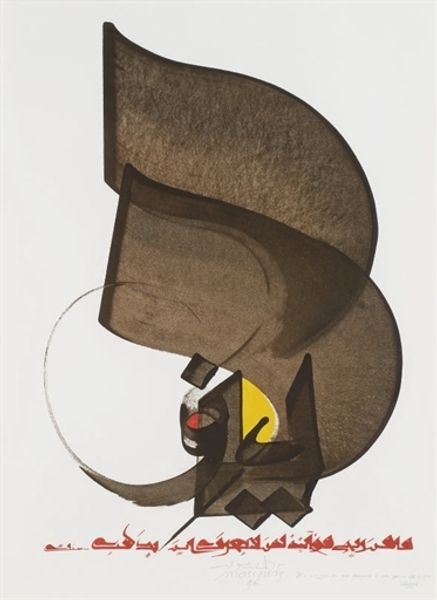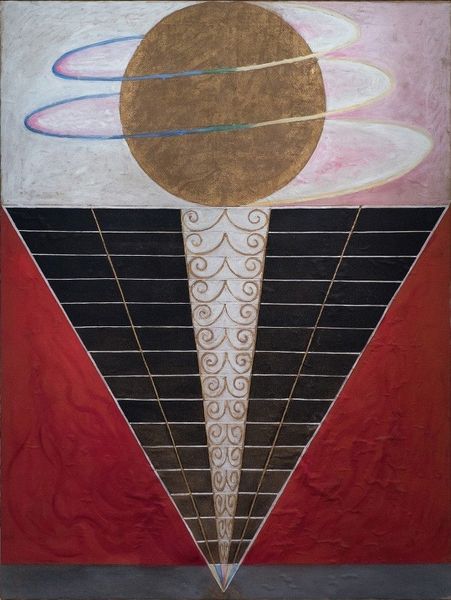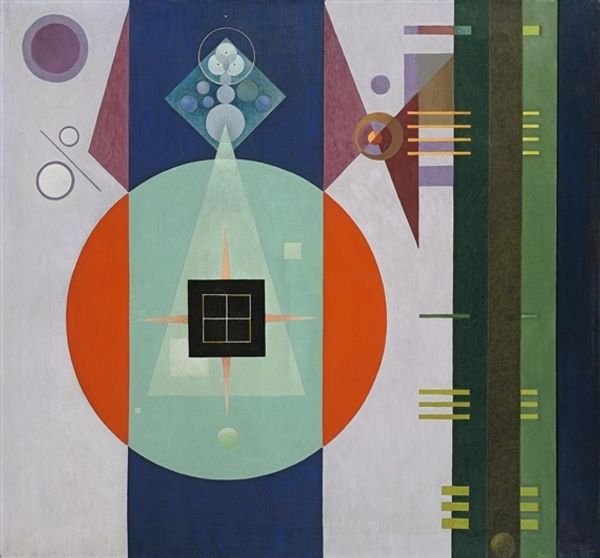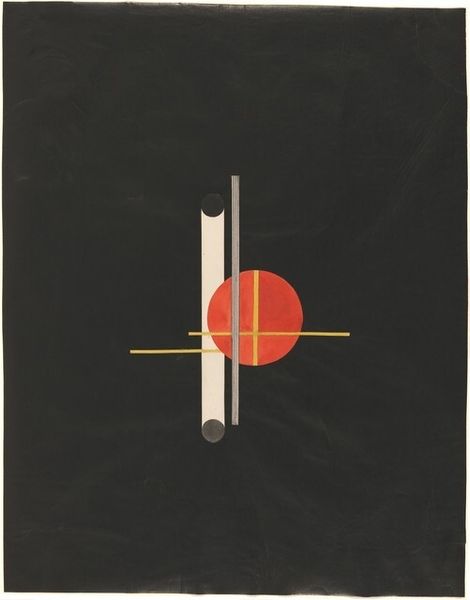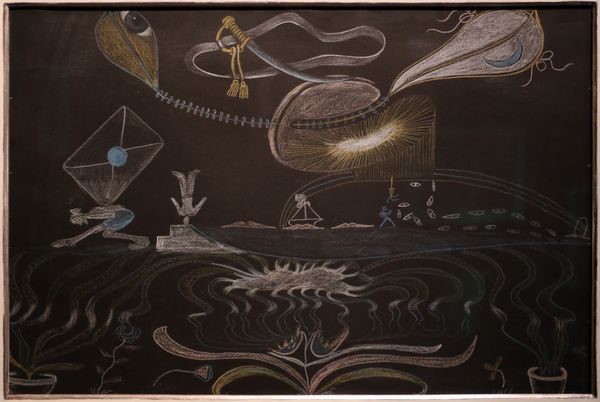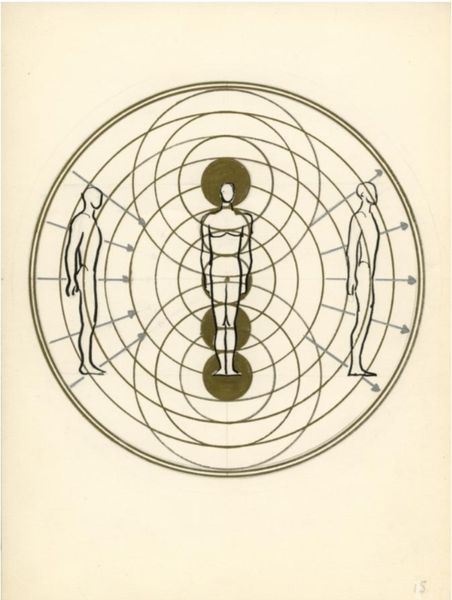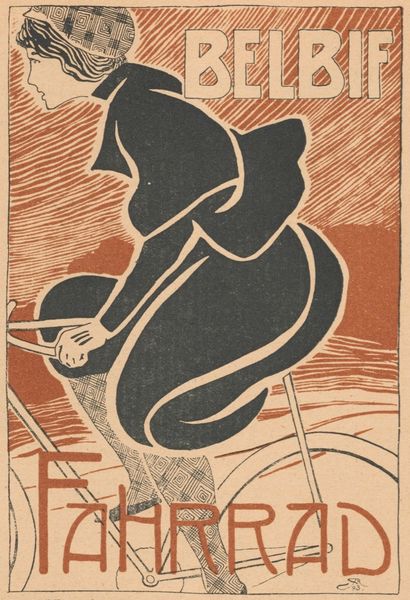
Dimensions: support: 803 x 638 mm frame: 970 x 806 x 62 mm
Copyright: © ADAGP, Paris and DACS, London 2014 | CC-BY-NC-ND 4.0 DEED, Photo: Tate
Curator: Max Ernst, born in 1891, painted this piece, titled "Men Shall Know Nothing of This," and it now resides at the Tate. I find its dreamlike quality immediately striking. Editor: Dreamlike, yes, but a bit unsettling. The title alone hints at hidden knowledge, perhaps deliberately withheld. It evokes themes of secrecy and exclusion. Curator: Well, Ernst was knee-deep in Surrealism, a movement all about tapping into the subconscious. It’s like he’s trying to paint the unspeakable. The figures, suspended by threads, feel almost puppet-like. Editor: Exactly. And whose hand controls those strings? The composition feels overtly symbolic, suggesting patriarchal control and the silencing of the feminine. Curator: I see it more as a personal exploration. The figures could represent aspects of the artist's own psyche, grappling with inner turmoil and suppressed desires. Editor: Perhaps, but we can’t ignore the broader social context. The post-war era was ripe with anxieties about power, gender, and knowledge. Curator: Ultimately, art is subjective, isn't it? We each bring our own experiences and interpretations to the canvas. Editor: Precisely. It's a dialogue, a conversation between the artwork, the artist, and the viewer. And hopefully we can all learn something new.
Comments
tate 6 months ago
⋮
http://www.tate.org.uk/art/artworks/ernst-men-shall-know-nothing-of-this-t00336
Join the conversation
Join millions of artists and users on Artera today and experience the ultimate creative platform.
tate 6 months ago
⋮
Ernst studied philosophy and psychology in Bonn and was interested in the alternative realities experienced by the insane. This painting may have been inspired by the psychoanalyst Sigmund Freud’s study of the delusions of a paranoiac, Daniel Paul Schreber. Freud identified Schreber’s fantasy of becoming a woman as a ‘castration complex’. The central image of two pairs of legs refers to Schreber’s hermaphroditic desires. Ernst’s inscription on the back of the painting reads: ‘The picture is curious because of its symmetry. The two sexes balance one another.’ Gallery label, July 2008
